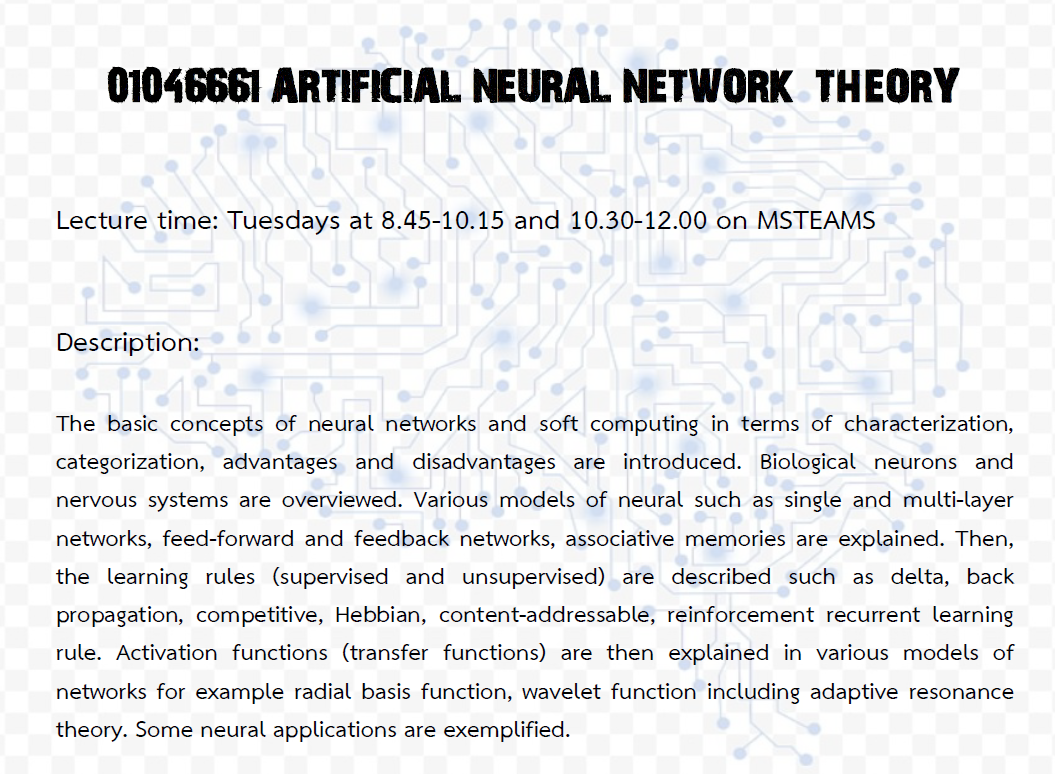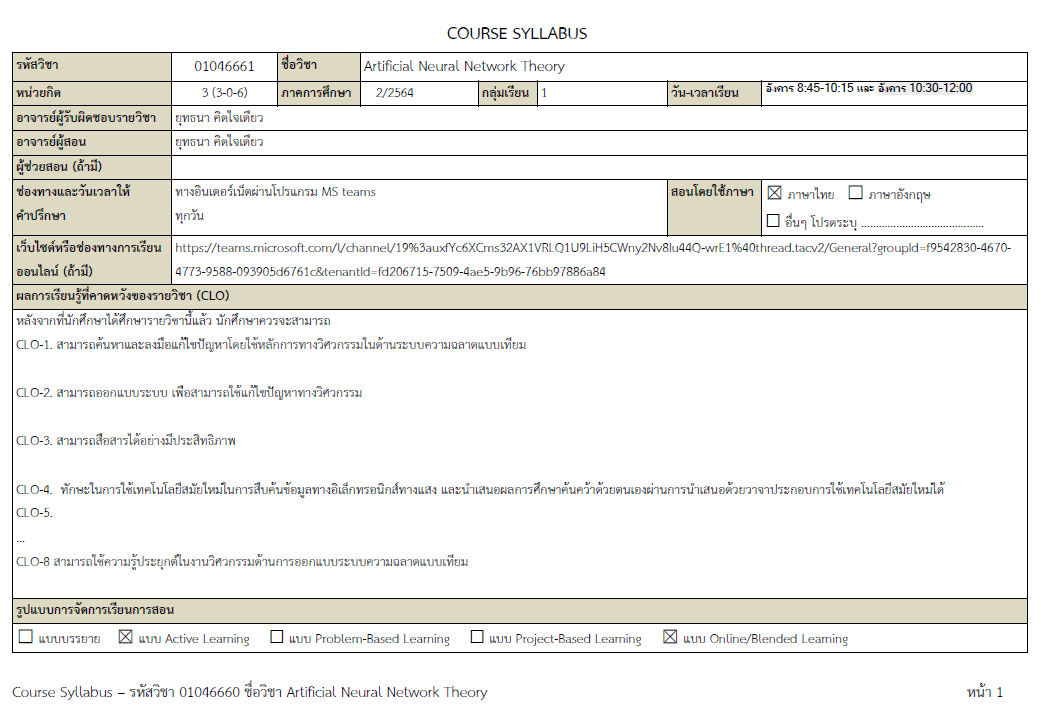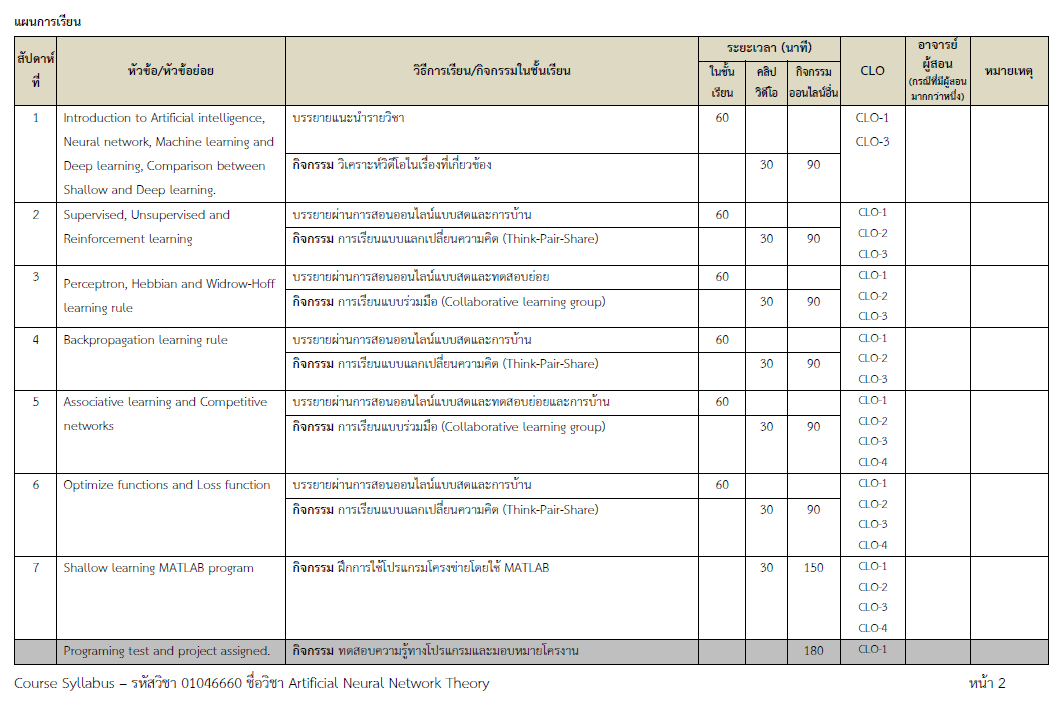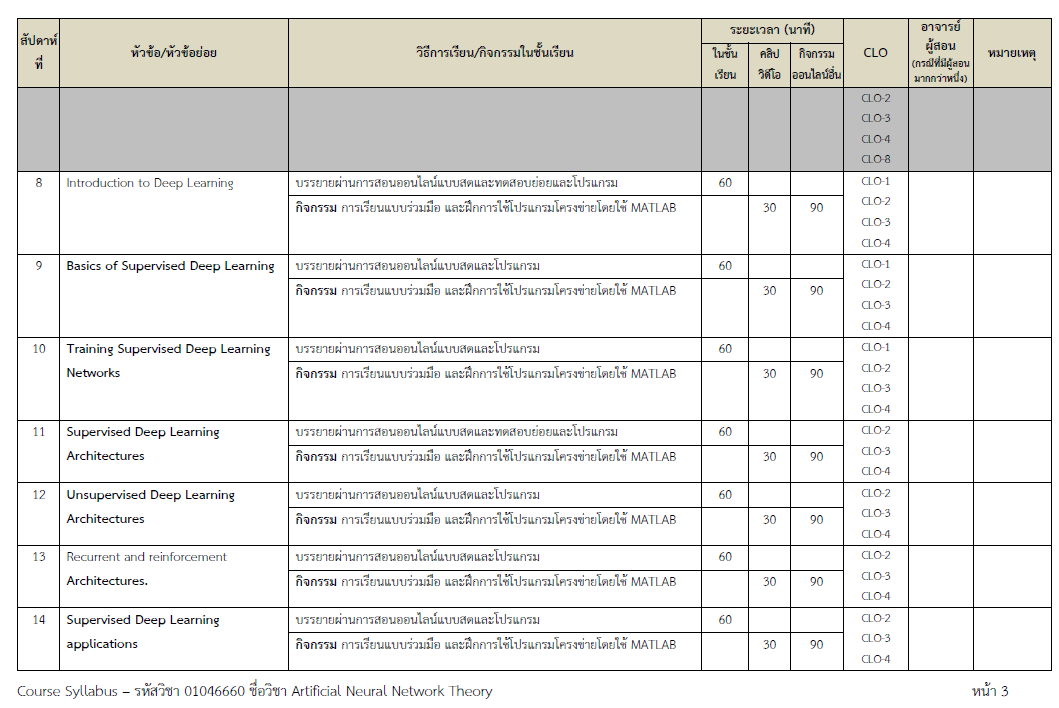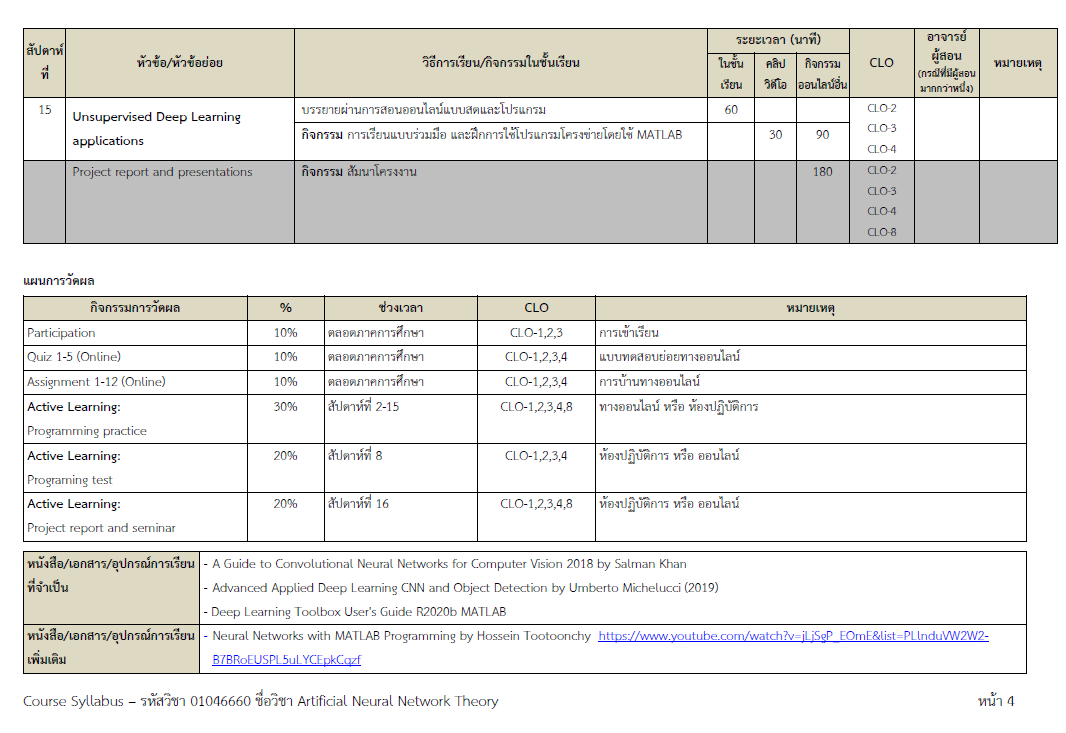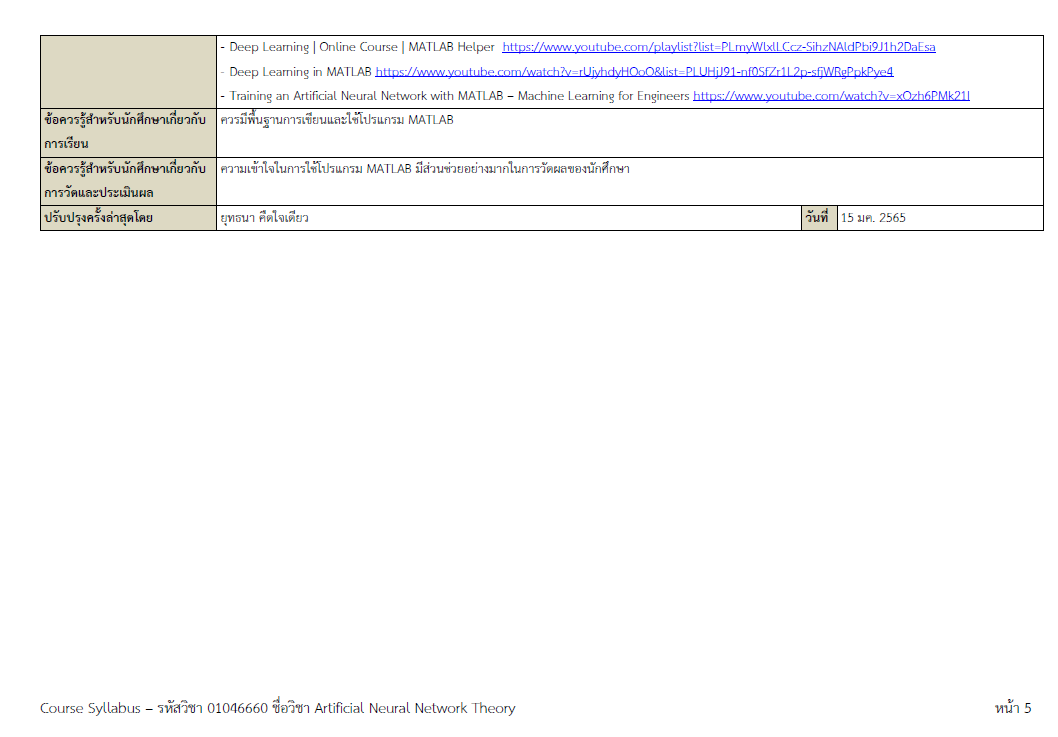Artificial Neural Network Theory รหัสวิชา 01046661
แนวการเรียนการสอน
Active Learning
อาจารย์ผู้สอน
ผศ.ดร.ยุทธนา คิดใจเดียว
คำอธิบายรายวิชา
หลักการพื้นฐานของโครงข่ายประสาท และการคำนวณแบบอ่อนในด้านคุณสมบัติ ชนิด ข้อดีและข้อเสีย ได้ถูกนำเสนอ เซลประสาทและระบบประสาททางชีวภาพถูกกล่าว
หลายๆแบบจำลองของนิวรอล โครงข่ายแบบชั้นเดียว และแบบหลายชั้น โครงข่ายแบบฟีดฟอร์เวิร์ด และฟีดแบ็ค แอสโซซิเอทีฟเมมโมรี ได้ถูกอธิบาย และการเรียนรู้แบบต่างๆ
(แบบมีการสอนและไม่มีการสอน) ได้ถูกอธิบายเช่น การเรียนรู้แบบเดลตา แบ็คพรอบพาเกชั่น คอมเพตทีทีฟ เฮปเบียน คอนเท็น แอสเดรสเซเบิล รีเอนฟอร์สเมนต์ รีเคอเรนต์
แอคติเวชันฟังก์ชัน (ทรานเฟอร์ฟังก์ชัน) ได้ถูกอธิบายในหลายรูปแบบโครงข่าย เช่น เรเดียลเบซิส เวฟเลท รวมทั้งทฤษฎีอแด็ปทีฟเรโซแนนท์ การประยุกต์ใช้งานของนิวรอลได้ถูกยกตัวอย่าง
The basic concepts of neural networks and soft computing in terms of characterization, categorization,
advantages and disadvantages are introduced. Biological neurons and nervous systems are overviewed.
Various models of neural such as single and multi layer networks, feed forward and feedback networks,
associative memories are explained. Then, the learning rules (supervised and unsupervised) are described
such as delta, back propagation, competitive, Hebbian, content addressable, reinforcement recurrent learning
rule. Activation functions (transfer functions) are then explained in various models of networks for example
radial basis function, wavelet function including adaptive resonance theory. Some neural applications are
exemplified.
